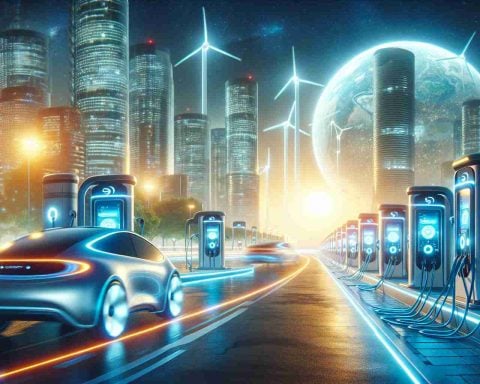The Shift to Electric Vehicles in China
China is on the brink of a remarkable transformation in its automotive landscape. For the first time, electric vehicles (EVs) are projected to outsell traditional internal combustion engine (ICE) vehicles in 2024, marking a pioneering moment in the global automotive industry.
Recent projections from several financial institutions indicate that EV sales in China, which include both battery-electric and plug-in hybrids, are expected to soar by 20% in 2025. This surge will bring total sales to over 12 million units, a steep increase from 5.9 million in 2022. In stark contrast, traditional vehicle sales are set to experience a downturn of over 10%, falling below 11 million units, a decline of nearly 30% since 2022.
This shift reflects China’s robust advancements in technology and an adeptness in securing critical resources vital for EV production, such as lithium and cobalt. The nation’s manufacturing prowess has significantly lowered costs, making EVs more accessible to consumers. Industry experts underscore that China is leading globally in this arena.
Foreign automakers are feeling the strain, with market share from foreign-branded cars dwindling to a record low of 37% in 2024. Traditional giants like General Motors and Volkswagen are already facing financial setbacks, with significant write-downs reported due to the rapid evolution in consumer preferences favoring homegrown brands.
China’s rapid growth in the EV sector is likely to reshape the global automotive power dynamics, urging traditional manufacturers to swiftly adapt to remain relevant in this electrifying market.
China’s Electric Vehicle Revolution: A Game Changer for the Global Automotive Industry
China is experiencing a significant transformation in its automotive landscape, poised to become the first country where electric vehicles (EVs) outpace traditional internal combustion engine (ICE) vehicles in sales as early as 2024. This monumental shift is expected to leave a lasting impact on the global automotive market.
Projections and Trends
Recent analyses from reputable financial institutions predict that EV sales will soar by 20% by 2025, resulting in over 12 million units sold. This is a dramatic increase from approximately 5.9 million units in 2022. In contrast, traditional vehicle sales are anticipated to plunge over 10%, dropping below 11 million units—a decline of almost 30% from two years ago. This transition not only highlights China’s rapid adoption of electric mobility but also showcases a broader trend of sustainable transportation in the auto industry.
Key Factors Driving Change
Several critical factors contribute to China’s leadership in the EV market:
1. Technological Advancements: Continuous innovations in battery technology and electric drivetrains have made EVs more efficient and appealing.
2. Resource Acquisition: China has effectively secured essential minerals, such as lithium and cobalt, that are crucial for battery production.
3. Manufacturing Efficiency: The country’s proficiency in manufacturing has significantly driven down costs, making EVs financially accessible to a broader consumer base.
Market Impact and Foreign Automakers
The rapid expansion of the EV sector in China is generating repercussions for foreign automotive manufacturers. Foreign-branded vehicles have seen their market share plummet to a record low of 37% in 2024. Companies like General Motors and Volkswagen are reporting financial challenges, including substantial write-downs that reflect the urgent need to pivot towards EVs in response to shifting consumer preferences favoring domestic brands.
Advantages and Disadvantages of the Shift
# Pros:
– Cost-Effectiveness: Lower operational costs associated with EV ownership make them more appealing to consumers.
– Environmental Benefits: A focus on reducing emissions aligns with global sustainability goals.
– Government Support: The Chinese government’s incentives for EV purchases bolster consumer interest and manufacturer support.
# Cons:
– Infrastructure Needs: The rapid increase in EV adoption necessitates a robust charging infrastructure, which is still developing.
– Market Volatility: Sudden changes in the market could lead to instability for manufacturers unable to adapt swiftly.
Future Innovations and Insights
As China advances toward its electrification goals, key innovations are anticipated in various areas, including:
– Battery Technology: Continued improvements in energy density and charging speeds promise to enhance the EV experience.
– Autonomous Driving: The integration of autonomous driving technology in EVs is expected to gain traction, offering added safety and convenience.
– Sustainability: Innovations in recyclable materials for vehicle manufacturing may further align with environmental considerations.
Conclusion
The shift towards electric vehicles marks a pivotal moment for China’s automotive industry and its implications extend globally. As domestic manufacturers surge ahead, the traditional automotive powerhouses must expedite their transition strategies to maintain relevance in a rapidly evolving landscape. The focus on sustainability, innovation, and consumer-centric solutions will be crucial as the world watches China’s electric vehicle revolution unfold.
For more insights on China’s automotive transformation, visit Car and Driver.












